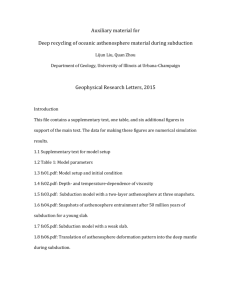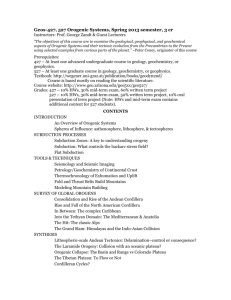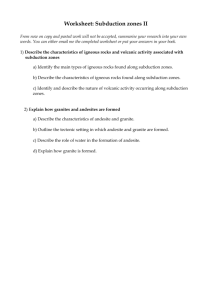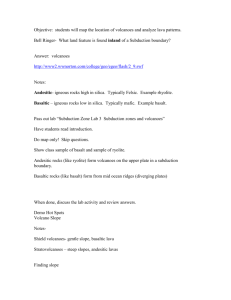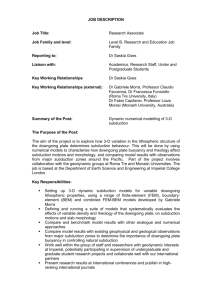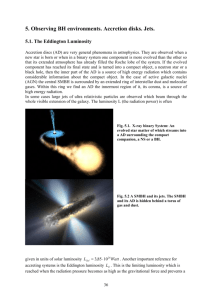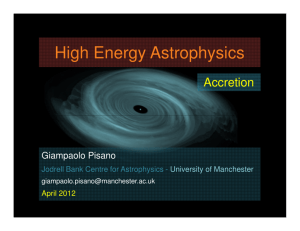Selzer_Cornelia_Talk - SWISS GEOSCIENCE MEETINGs
advertisement
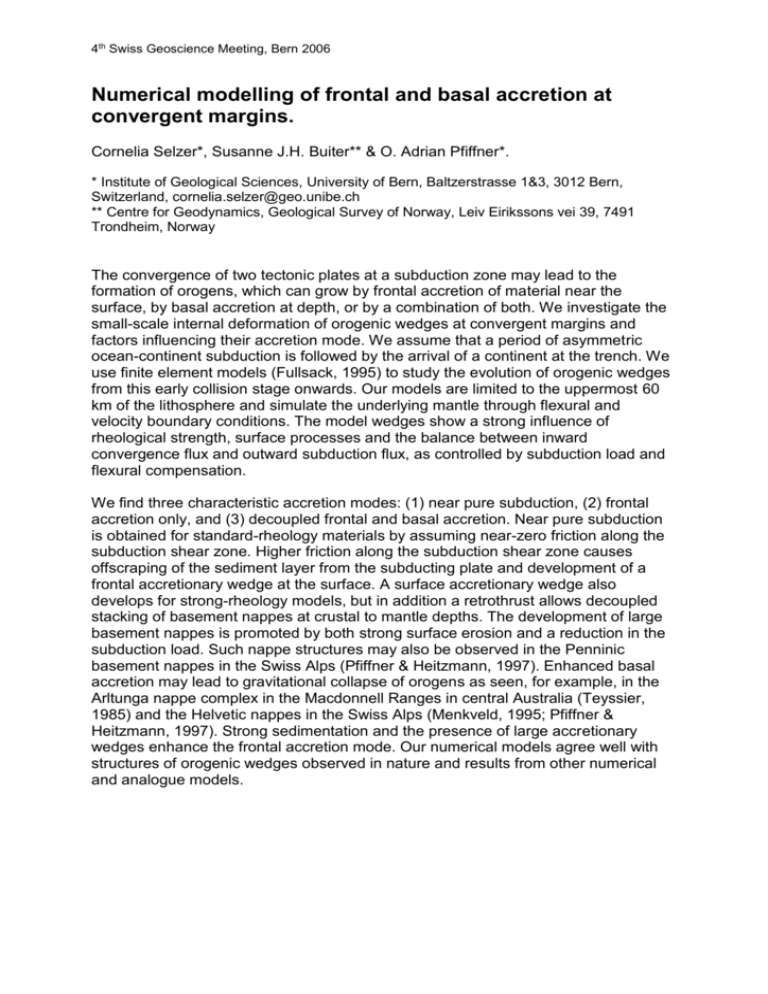
4th Swiss Geoscience Meeting, Bern 2006 Numerical modelling of frontal and basal accretion at convergent margins. Cornelia Selzer*, Susanne J.H. Buiter** & O. Adrian Pfiffner*. * Institute of Geological Sciences, University of Bern, Baltzerstrasse 1&3, 3012 Bern, Switzerland, cornelia.selzer@geo.unibe.ch ** Centre for Geodynamics, Geological Survey of Norway, Leiv Eirikssons vei 39, 7491 Trondheim, Norway The convergence of two tectonic plates at a subduction zone may lead to the formation of orogens, which can grow by frontal accretion of material near the surface, by basal accretion at depth, or by a combination of both. We investigate the small-scale internal deformation of orogenic wedges at convergent margins and factors influencing their accretion mode. We assume that a period of asymmetric ocean-continent subduction is followed by the arrival of a continent at the trench. We use finite element models (Fullsack, 1995) to study the evolution of orogenic wedges from this early collision stage onwards. Our models are limited to the uppermost 60 km of the lithosphere and simulate the underlying mantle through flexural and velocity boundary conditions. The model wedges show a strong influence of rheological strength, surface processes and the balance between inward convergence flux and outward subduction flux, as controlled by subduction load and flexural compensation. We find three characteristic accretion modes: (1) near pure subduction, (2) frontal accretion only, and (3) decoupled frontal and basal accretion. Near pure subduction is obtained for standard-rheology materials by assuming near-zero friction along the subduction shear zone. Higher friction along the subduction shear zone causes offscraping of the sediment layer from the subducting plate and development of a frontal accretionary wedge at the surface. A surface accretionary wedge also develops for strong-rheology models, but in addition a retrothrust allows decoupled stacking of basement nappes at crustal to mantle depths. The development of large basement nappes is promoted by both strong surface erosion and a reduction in the subduction load. Such nappe structures may also be observed in the Penninic basement nappes in the Swiss Alps (Pfiffner & Heitzmann, 1997). Enhanced basal accretion may lead to gravitational collapse of orogens as seen, for example, in the Arltunga nappe complex in the Macdonnell Ranges in central Australia (Teyssier, 1985) and the Helvetic nappes in the Swiss Alps (Menkveld, 1995; Pfiffner & Heitzmann, 1997). Strong sedimentation and the presence of large accretionary wedges enhance the frontal accretion mode. Our numerical models agree well with structures of orogenic wedges observed in nature and results from other numerical and analogue models. 4th Swiss Geoscience Meeting, Bern 2006 Figure 1: a) Strong-rheology model. b) Effects of a reduction of the subduction load (to 80% of its initial value after 150 km of convergence) and application of medium erosion and sedimentation (diffusion coefficient: 1.6x10-6 m2s-1) after the load reduction. Model results are shown after 390 km of total convergence. REFERENCES Fullsack, P. (1995): An arbitrary Lagrangian-Eulerian formulation for creeping flows and its application in tectonic models. Geophys. J. Int. 120: 1-23. Menkveld, J.W. (1995): Der geologische Bau des Helvetikums der Innerschweiz.PhD thesis University of Bern. Pfiffner, O.A. & Heitzmann P. (1997): Geological interpretation of the seismic profiles of the Central Traverse (lines C1, C2 and C3-North). in Pfiffner, O.A. and others, eds., Deep Structure of the Swiss Alps: Results of NRP 20, Birkhäuser Verlag Basel: 115-122. Teyssier, C. (1985). A crustal thrust system in an intracratonic tectonic environment. Tectonophysics 7(6): 689-700.
